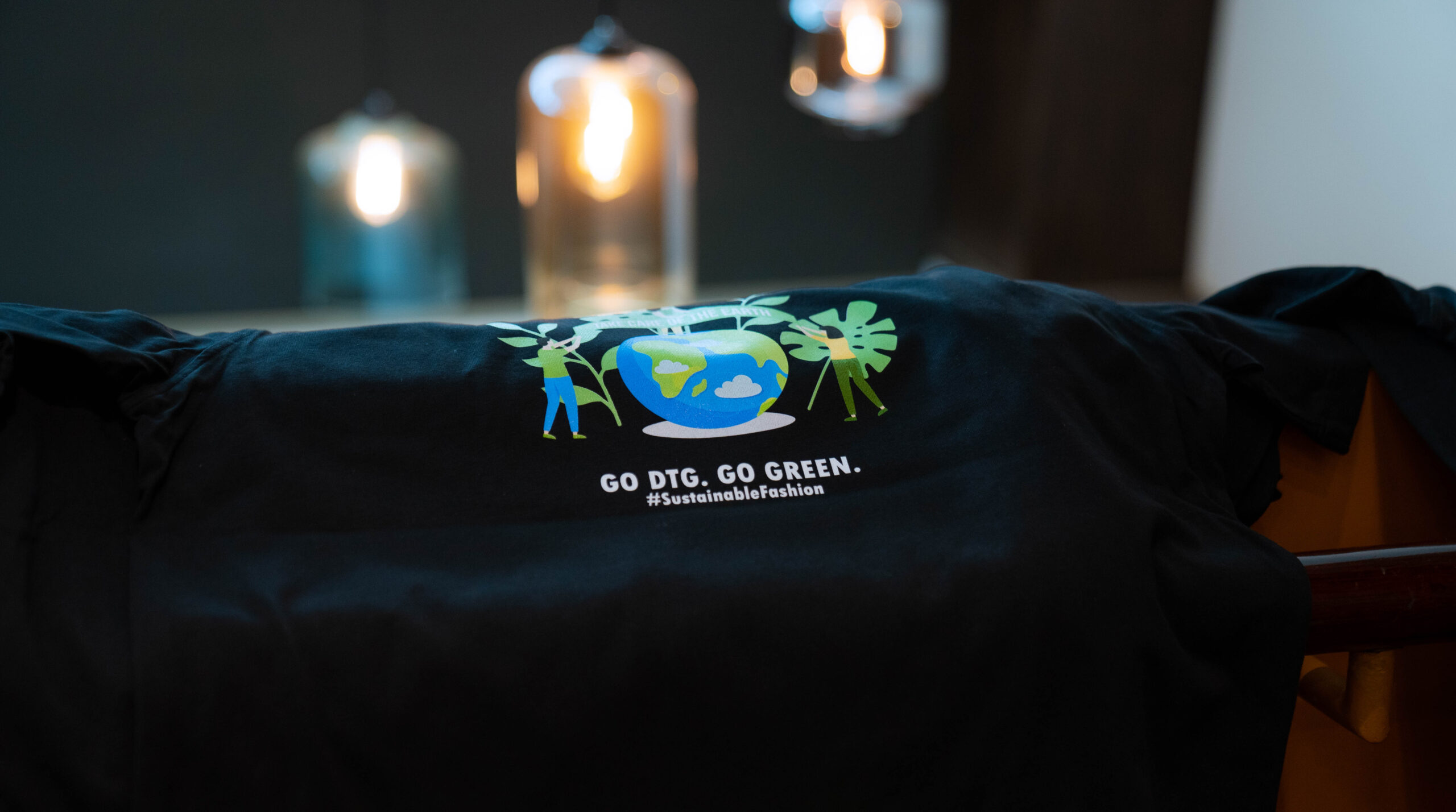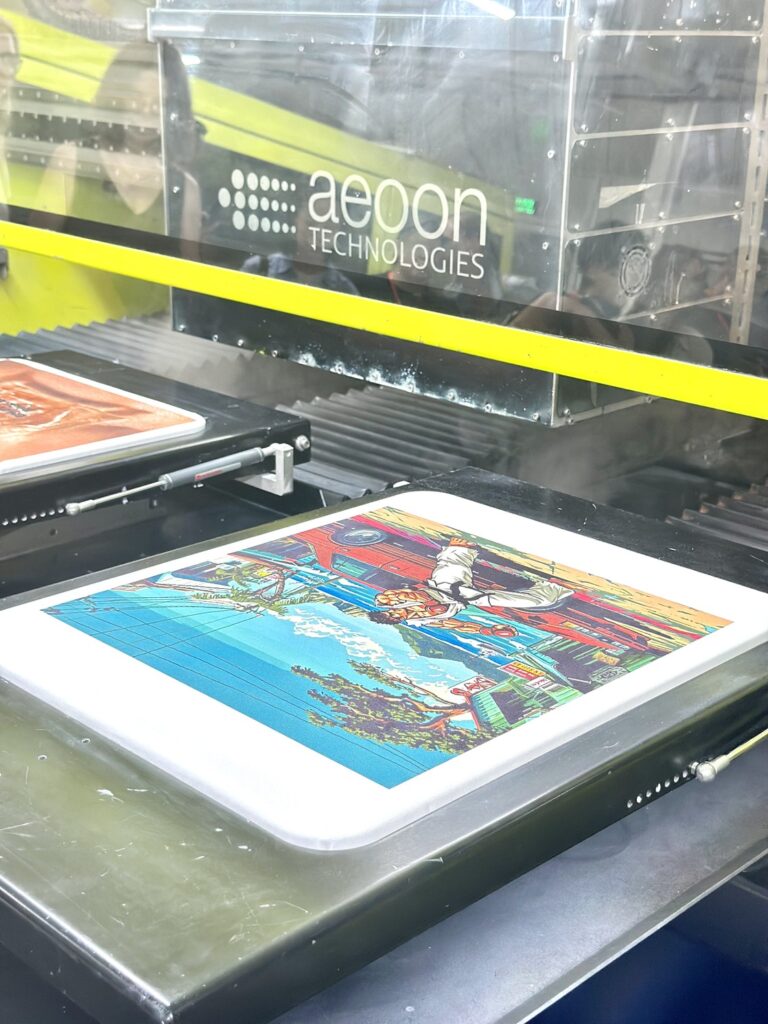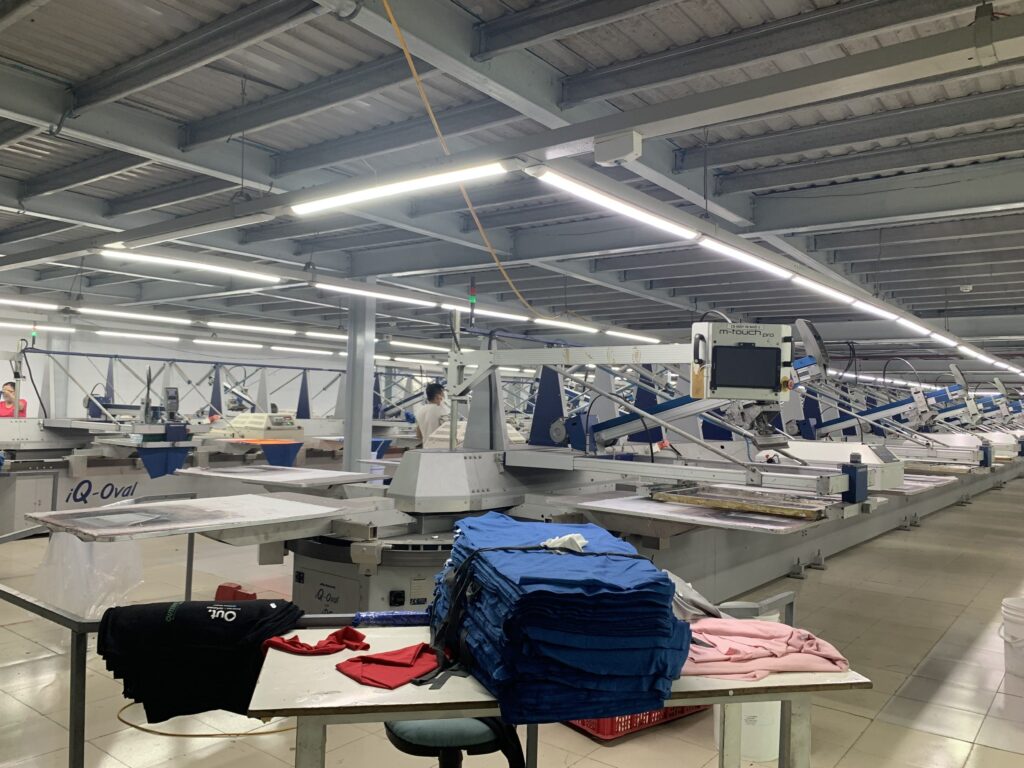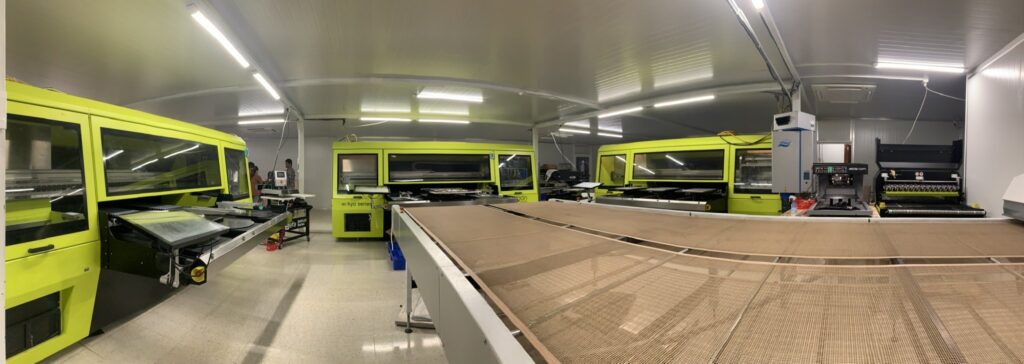Printing Production

Garment printing is a popular and rapidly growing segment of the textile industry. This segment combines modern digital technologies with traditional printing methods. Our production actively uses two methods: digital and screen printing. Each of these methods has its own advantages and features.
We have been involved in printing technologies since 2014. Starting with small volumes and desktop digital printers, over time we have expanded our production capacity. This was due to the growing demand for customized prints.
Today, we are proud of our modern equipment from European manufacturers, which ensures the high quality of our products. This allows us to produce products in a short time. In addition, a range of additional services will make your interaction with us as comfortable as possible.
Digital Printing Department
Our digital printing department is the core of our print production process. Equipped with 3 industrial aeoon DTG printers and 2 industrial Epson DTG/DTF printers, we deliver vibrant, full-color prints. The pigment inks we use are highly resistant to washing and abrasion.
Digital printing offers numerous advantages, including the ability to produce small runs of uniquely designed products. This technology significantly reduces the time from design concept to finished product, providing our clients with unparalleled creative freedom.
Our department can produce between 500 and 700 units per hour.


Screen Printing Department
Screen printing, also known as silk screen printing, is a traditional printing method. This method has limitations in terms of the number of colors and is suitable for large-scale production runs with identical prints, offering high printing speeds. In our screen printing department, we work with a variety of fabrics. We use cotton, polyester, and blended fabrics.
The screen printing process involves the use of frames with stencils. Through these stencils, inks are applied to the fabric in layers. Our ink arsenal includes water-based, plastisol, and discharge inks.
Additionally, this method allows for the use of various effects: fluorescent colors, puff, glitter, and metallic finishes. Screen printing is more cost-effective for large volumes, making it popular for mass orders.
The department’s production capacity is 5,000 units per hour.

Our high-speed printing equipment enables us to handle large-volume orders and meet tight deadlines. We pay meticulous attention to every detail of the production process. Quality control begins with fabric inspection and extends through final product verification, including tests for washfastness and color fastness. Our team of experts oversees every stage, from design to packaging.
We continuously research and implement new technologies and materials for digital and screen printing. This allows us to maintain high standards of quality and safety. We strive to remain competitive and meet the needs of customers seeking unique, high-quality products. We are committed to innovation and ongoing improvement, offering our clients only the best.